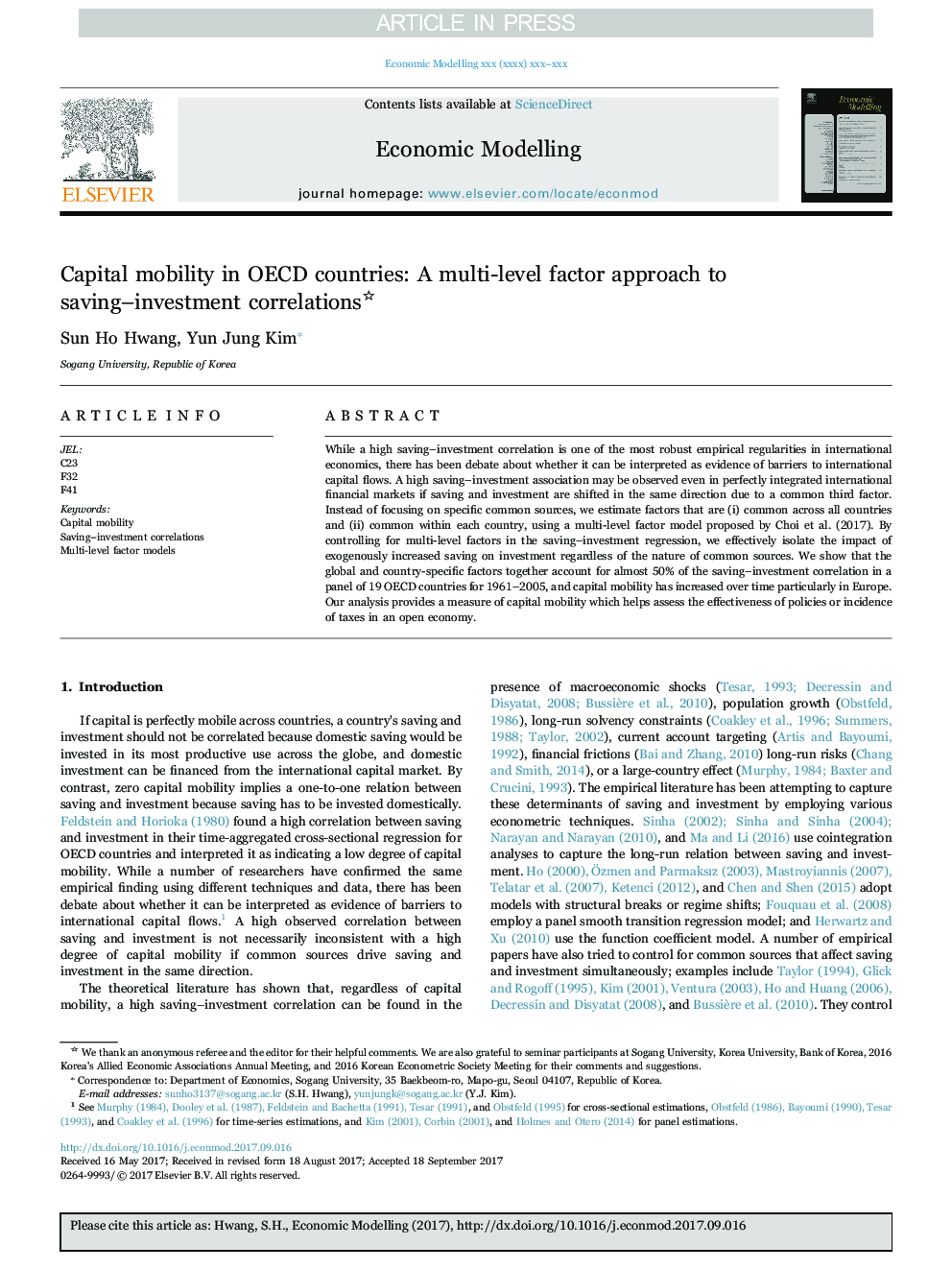| Article ID | Journal | Published Year | Pages | File Type |
|---|---|---|---|---|
| 7347447 | Economic Modelling | 2018 | 10 Pages |
Abstract
While a high saving-investment correlation is one of the most robust empirical regularities in international economics, there has been debate about whether it can be interpreted as evidence of barriers to international capital flows. A high saving-investment association may be observed even in perfectly integrated international financial markets if saving and investment are shifted in the same direction due to a common third factor. Instead of focusing on specific common sources, we estimate factors that are (i) common across all countries and (ii) common within each country, using a multi-level factor model proposed by Choi et al. (2017). By controlling for multi-level factors in the saving-investment regression, we effectively isolate the impact of exogenously increased saving on investment regardless of the nature of common sources. We show that the global and country-specific factors together account for almost 50% of the saving-investment correlation in a panel of 19 OECD countries for 1961-2005, and capital mobility has increased over time particularly in Europe. Our analysis provides a measure of capital mobility which helps assess the effectiveness of policies or incidence of taxes in an open economy.
Keywords
Related Topics
Social Sciences and Humanities
Economics, Econometrics and Finance
Economics and Econometrics
Authors
Sun Ho Hwang, Yun Jung Kim,
